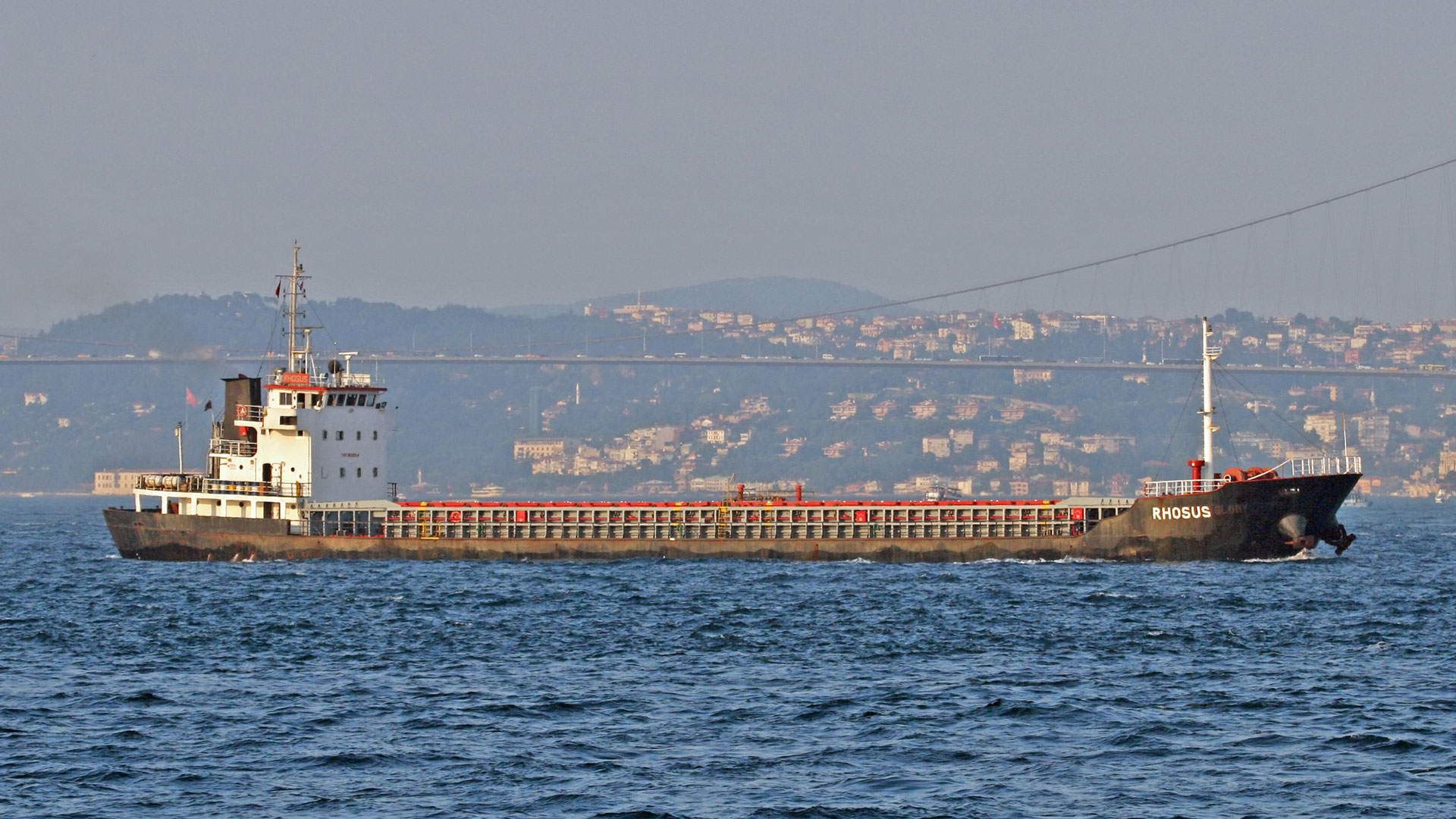General cargo ship Rhosus passing through Istanbul on 30 July 2011. The vessel was later abandoned in Beirut and sank in 2018. Its cargo, stowed in a nearby warehouse, caused the 2020 Beirut explosion. Image Acknowledgement: Frank Behrends
Rhosus – The Vessel That Carried The Beirut Ammonium Nitrate
The Rhosus, built in 1986 by Tokuoka Zosen KK, Naruto, Tokushima on the island of Shikoku, South West Japan, was 27-years old when she arrived in Beirut with her cargo of ammonium nitrate in 2013.
Shipping Safety by Special Surveys
It appears her first Japanese Owner named her Daifuku Maru No. 8 and kept her for 16 years before selling her soon after a third Special Survey had became due at about 15 years. Special Surveys, or Continuous Surveys, of merchant ships are held by the Classification Societies on a 5-yearly cycle. They require that all compartments and essential machinery are surveyed once in that period and repaired or replaced as found necessary.
Little is usually found wrong during the first 5-year cycle but the second Special Survey at 10 years usually results in ships being sold on by the reputable companies such as A.P. Møller – Mærsk – this being the sweet spot as maintenance bills start mounting afterwards. However, many Greek owners have made a very successful job of operating ships sold at this time. The end of the third cycle at 15 years is usually expensive, because of the amount of corroded steel-work needing replacement and many vessels are then scrapped. At this time, ships also often leave the major Classification Societies, such as Lloyd’s Register or Det Norkse Veritas-Germanischer Lloyd, and transfer to less well-known local inspection authorities. Very few ships survive the fourth Special Survey at 20 years and are generally only fit for a one-way trip to the scrapyard!
Rust Bucket
M.V. Rhosus looks like a particularly dubious ship with 7 subsequent changes of name and owner: often an indicator that a ship is in poor condition and it’s not worth spending money to keep her trading. Salt-water is an excellent electrolyte for the corrosion of steel in a ship’s ballast tanks and many bulk cargoes can corrode the steel in cargo holds too. It would have been surprising if a significant part of the hull plating and framing was much thicker than paper, or even existed. It’s therefore not surprising that she sank at her Beirut moorings in 2018.
The machinery side is unlikely to have been any better, typically giving rise to numerous “technical problems” such as: the main engine moving parts would have been a rattling fit; fuel leaking from pipe unions; there were probably no spare parts onboard (sold); lots of cement boxes and epoxy patches around valves and pipes; perished rubber hoses around the pipes; a non-starting emergency generator; jammed emergency shut-off valves and ventilators.
Port Inspections
Very few ships are as bad as this but vessels do fall “off the radar” in regions of the world where state authority is either weak or non-existent, for example the Lebanon. Port state inspection authorities elsewhere detain sub-standard ships. Rhosus had been detained in Spain but still managed to sail.
Port state authorities and Classification Societies are independent organisations but co-operation does occur: I had my authorisation to carry out a safety survey on a Bulgarian tanker in Rotterdam withdrawn, after it became apparent I was doing it as it should be done (I put my hammer through the side of one her wooden lifeboats)! A phone call to the Port Authorities managed to get the vessel detained for a month or so.
Are you a member of the Newcomen Society?
Having just celebrated its Centenary Year, the society has published over a 1000 papers in The Journal – an invaluable archive of original research material published twice a year, covering all aspects of engineering from ancient times to the present, plus available to browse and download in our FREE TO MEMBERS Archive.
Full Membership includes:
- Journal for the History of Engineering & Technology (two issues, one volume per year)
- Printed and/or PDF versions of LINKS, Newcomens’ newsletter (published 4 times a year)
- Free access and download facilities to the Society’s Archive of past papers back to 1920 (The Journal)
- Membership of local branches and subject groups
- Access to the website’s Member Area offering access to research sources & access to other members (subject to privacy permissions)
- Attendance at summer meetings, conferences, lectures and study days.


For Peter Filcek
I note that Peter worked with Green and Silley Weir in mid 70’s. I joined P&O in 1974 to be MD of Falmouth Shiprepair and Falmouth Docks Co. – the Silley family had moved on by then. P&O offloaded us to British Shipbuilders. I graduated from Newcastle just before it left Durham and spun off on its own.
I then became MD of Fairey Marine with yards on the Hamble,East Cowes and Gosport. In 84 joined GEC as Chairman of Marconi USA. Back in UK headed Easams and Projects.
Have just joined the Society after finding a reference to work on Continental drift referred to Dr.Fred Starr . I hope to track him down.
Ian Sutherland
Excellent article Peter.